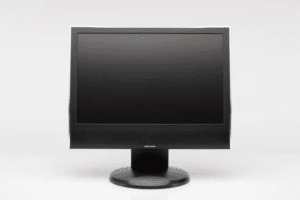LCD monitors are becoming more and more popular with consumers, especially for home computing. They are thin, lightweight, energy-efficient, and display high-quality images. However, they also have some of the most problems of any type of monitor on the market today due to their complex design.
Here is a list of some common problems with LCDs along with solutions.
Problem 1: The monitor is too dim
Even when the computer is turned on, the monitor is barely visible.
This can be fixed by adjusting a few settings in your video card’s control panel. Click “Start” and then click “Control Panel.” Click “Appearance and Themes,” then click “Display.” Now highlight the display that you are currently using and select “Settings.” Go to the section labelled “Adjust screen resolution” and make sure that a checkmark appears by the option called “Let me choose one scaling level for all my displays”. Click Apply, then OK.
Now go back to Display Settings and choose a lower setting such as 1024×768 or 800×600 maximum. After that, reboot your and it should look normal again. If the problem persists, make sure that this time it is not set to “System Defaults.”
Problem 2: The image looks distorted or fuzzy
According to customers who have experienced this problem, they see multicoloured lines or horizontal waviness on their screens. This is usually due to a loose connection inside your monitor. If you are comfortable opening your monitor and looking around inside for any cable connections that may be loose, then simply reattach them securely. Unfortunately though, if you have not experienced in these sorts of things yourself, we would recommend taking it in to a professional repair shop as you risk doing further damage if not done correctly.

Problem 3: One colour on the screen is displayed incorrectly
For example all red parts of the screen or all blue.
An electrical surge or spike can damage the components inside your monitor and cause one color to be displayed incorrectly. Try unplugging your monitor and letting it sit for a few minutes. Plug it back in and turn it on to see if the problem is fixed. If it continues, you may need to replace internal components such as capacitors or transistors with new ones which are more resistant against these voltage fluctuations.
Problem 4: The image disappears when moving my head
This usually means that there is a loose connection between your LCD panel and video card (the board which sends images from your PC’s CPU to the monitor). This will require opening up the case of both devices and making sure that they’re properly plugged in and fully screwed in.

Problem 5: The whole image is shaking or vibrating
This happens when the monitor’s “Image Lock” switch is turned off. This can be activated once your computer boots up, but for some reason, it got turned off. Look on your monitor for a small switch that will lock down the entire image, so that there are no gaps between pixels.
Problem 6: Horizontal bars appear across the screen
There are several reasons why this may occur including failing capacitors, broken solder joints, faulty transistors, faulty power supplies or incorrect power supply voltage settings. All monitors have adjustment controls to compensate for these problems either through buttons located on the front of the monitor or by using on the keyboard to adjust certain settings.
If these solutions do not work or if you simply don’t want to try them, we at Best Gaming Tips think that your best bet is to bring it into a professional repair shop for inspection. Screen replacement and related repairs are usually very expensive to the complexity of the technology.
